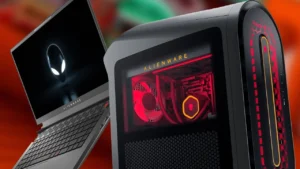“Cloud gaming refers to a game that resides on a company server rather than on the gamer’s computer or device. The gamer enters the game by installing a client program that can access the server where the games are running. “

The client program that the gamer has installed on his PC is usually very lightweight and does not require a lot of processing power to work. The gamer can select one of the games available on the client side and play them on the server. The processing power of the game is provided by the server. The main advantage of cloud gaming is that the company can upgrade the games without having to worry as much as the capabilities of the user’s computers.
Some examples of Cloud gaming are: Valve’s DOTA2(Defence of the Ancients 2), TF2(Team Fortress 2), CS:GO(Counter Strike: Global Offensive). Steam is the client server here and you get the aforementioned games from the client to play on servers hosted by Valve.
You could have the world’s fastest internet connection streaming hundreds of terabytes of data per second and it wouldn’t matter worth a damn, because what’s important is not how many bytes you can send or receive in a second, it’s how fast each byte gets from A (your device) to B (your ISP) to C (the cloud gaming server) and then back through B all the way to A again.
And electric signals always move at the same speed (barring extreme temperatures beyond even the abilities of the climate changes of Greta Thunbergs worst nightmares), which means that over whatever the physical cable distance is, it will always take the same amount of time for your button press to be sent to the game server.
What you can achieve through technological developments is better and faster video encoding of each image frame (and audio data) that must then be sent back from C through B to A and will always take more time per frame than any button press.
This means you’re going to have a substantial delay between your button press and you seeing what the button press does on your screen.
What’s even worse is that the game’s AI doesn’t take into account that there is going to be a substantial time gap between them doing something (like attacking you) and their action being shown on your screen, which means you’re losing valuable tenths of a second of reaction time for everything that happens in the game.
How do you think that’s going to effect games like first person shooters? How about fighting games like Street Fighter? How about games with quick time events? How about rhythm games?
Now add onto that that even the best and fastest internet connections still encounter package loss, meaning that a fraction of something like a streamed image gets lost in transit to your device.
When you’re streaming a movie or music or some other kind of non-interactive media, that’s no big deal, that’s what buffering is for.
Your device will just recognize that a package it’s going to need 5–15 seconds into the future is missing and request that the server resend it so it can be merged into the full image frame before it needs to be shown.
In the case of a videogame, the game streaming server can never know what it’s going to be rendering ANY amount of time into the future, so there is no such thing as buffering.
So when you get package loss on a streamed game, what you’ll see is skipped frames, as it just won’t show the frames that there is data missing from.
So for maybe a third of a second your game is going to be a still image of the gradually more and more distant past while the game still being run on the server moves on without you, until you get full frames again and warp back to what’s as close to what’s presently going on in the game as the service can provide.
One of the big marketing selling points of cloud gaming is that the service can run your games on much more expensive and more powerful hardware so the graphical quality can be cranked up to max without you having to buy all that expensive hardware, but what’s the point of that when the video encoding is going to turn it into what’s at best the quality of a well encoded YouTube video.
All that graphical fidelity is going to evaporate, like dew from a green blur (that would have looked like grass if it had been rendered locally), long before it ever reaches your screen.
Cloud gaming is nothing but another scheme to turn games from something you own and use at your leisure into something you rent the privilege to experience until the service is dropped, and if you have any interest in gaming at all, you will reject it outright as the snake-oil abomination it is.







